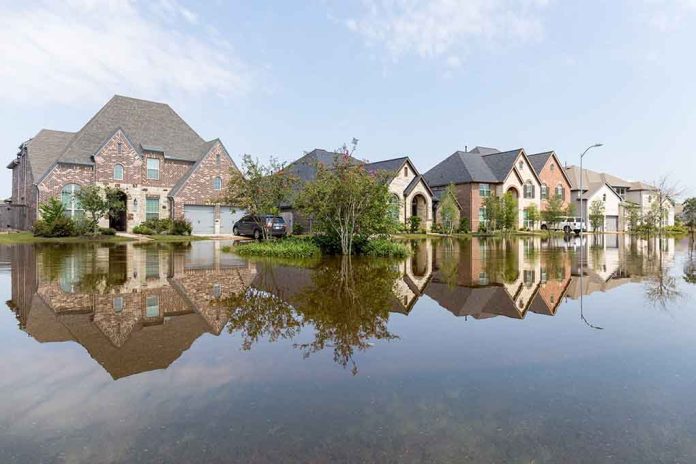
What is the NFIP and Why Do You Need It? Your Free Guide Here
(DailyDig.com) – Flooding can be an emotional and financial disaster for businesses and homeowners. According to the Federal Emergency Management Agency, an inch of floodwater can cost property owners up to $25,000.
The worst part is that everyone lives in a flood-risk area. What matters is whether you reside in a low, moderate, or high-risk flood area.
For this reason, homeowners need flood insurance that helps them rebuild their homes faster in the event of flood damage. The NFIP flood insurance enables you to protect the property you’ve worked hard to build.
Even if you have regular homeowners insurance, you still need separate flood insurance. Let’s dive deeper to identify why. But first, let’s understand the meaning of the National Flood Insurance Program (NFIP).
What Is NFIP?
The NFIP is an insurance program that reduces floods’ social and economic impact. The Federal Emergency Management Agency (FEMA) manages the NFIP program and delivers it to the public through more than 50 insurance companies.
Nearly all homeowners insurance policies don’t cover flood damage. On the other hand, NFIP is a separate flood insurance policy covering your building, its content, or both. As a result, it helps you protect crucial financial assets. Businesses, property owners, and renters can leverage NFIP flood insurance to recover fast when floodwaters recede.
Who Qualifies for NFIP Coverage?
You must reside in a community participating in the NFIP program to qualify for National Flood Insurance. Consult FEMA’s Community Status Book to determine whether you live in a community that participates in the National Flood Insurance Program. The government requires property owners with mortgages in high-risk flood areas to have flood insurance; but you do not need to live in a high-risk area to purchase coverage.
What Is Covered in the NFIP Policy?
Your NFIP policy covers direct physical losses to your assets as a flooding victim. The NFIP offers two types of insurance coverage.
- Building coverage
- Content coverage
You can only buy building and content coverage separately—not as one policy. Unless you have content insurance coverage, your building coverage doesn’t cover flood-destroyed belongings inside the building.
Building coverage protects your:
- Solar energy equipment, pumps, fuel, and water tanks in your building
- Water heaters and furnaces
- Bookcases, paneling, and permanent cabinets
- Permanent carpets in your building
- Plumbing and electrical systems
- Built-in appliances like dishwashers
- Cooking stoves and refrigerators
- Window blinds
- Staircases, foundation walls, and anchorage systems
Contents coverage protects your:
- Air conditioners
- Personal belongings like furniture and electronic equipment
- Valuable items like original artwork
- Dryer, washer, microwave oven
- Curtains
National Flood Insurance only covers losses related to the flooding directly. If the flooding isn’t the proximate cause of damages, NFIP policy doesn’t cover the losses. Suppose fire causes the main water pipe in your property to burst. Despite the losses resulting from water damage, the fire is the immediate cause of the incident that NFIP policy doesn’t cover.
What Are the Coverage Limits of the National Flood Insurance Program?
Coverage Limit for Residential Properties
With an NFIP building coverage, you can recover up to USD 250,000 if the property is residential. Residential property owners with content coverage can secure up to USD 100,000 for damaged belongings inside the building.
Coverage Limits for Commercial Properties
With NFIP building coverage, you can secure up to USD 500,000 for your commercial building. Commercial property owners with content coverage can recover up to USD 500,000.
Why You Need NFIP (Even If You Have a Regular Homeowners Insurance)
No matter where you work or live, some flooding risks exist. What matters is whether you’re in a high, moderate, or low-risk area. You need NFIP coverage regardless of whether you have homeowners insurance. Here’s why.
1. Nearly All Properties Are Vulnerable to Flooding
According to the Federal Emergency Management Agency (FEMA), flooding can happen anywhere it snows or rains. In fact, 40% of NFIP flood insurance claims are from outside high-risk flood areas. That means you need to protect your building and its content with flood insurance, even if you live in a low or moderate flood risk area.
2. Most Homeowners Insurance Policies Don’t Cover Flood Damages
Almost all homeowners insurance policies don’t cover flood damages. Sadly, this reality hits many property owners when it’s too late. After a flooding disaster, uncovered property owners are left stranded with substantial rebuilding costs and expensive damages to their belongings.
The NFIP provides residential and commercial property owners policies to protect their assets. That way, you can recover quickly as a flooding victim.
3. You Can Protect a Building or Its Content (Or Both)
Whether you own or have rented residential property, you have options with a National Flood Insurance Program. You can choose from building coverage or content coverage to suit your situation.
If you’ve rented your residential property, content coverage suits you best to protect your belongings. On the other hand, you can purchase both policies separately (building and content) to protect the building itself and its content if you own your residential property.
What Are the Limitations of NFIP Coverage?
While NFIP coverage can protect your property and its contents, it has the following limitations:
- You can’t buy building and contents coverage as one package, which increases the insurance policies to deal with if you want to protect your building and its contents.
- Flood insurance doesn’t pay more than the policy limit, even if the flood damage amount exceeds the policy limit. Some guaranteed replacement cost insurers compensate you for the actual damages you sustain from the insured risk.
- A 30-day waiting period before the policy becomes active is a disadvantage. If floods occur during the waiting period, the NFIP does not cover your building or belongings. There are exceptions to the 30-day waiting period.
How to Find a Federal NFIP agent
Finding a federal NFIP agent is easy. Visit FEMA’s website. On the tab with a drop-down menu, select your state to access flood insurance providers in the National Flood Insurance Program. Choose the right federal NFIP agent based on reputation, ease of accessing services (e.g., 24/7 customer support), and referrals from previous customers.
Protect Your Property With National Flood Insurance
Rebuilding your property from scratch after disastrous flooding can be difficult because of the financial hardships. After all, flood damages are expensive. With National Flood Insurance, you protect your belongings and properties you worked hard to build. You ensure you have the financial backup to recover from devastating flood damages.
No matter where you work or live, flooding risks exist. It’s a matter of whether you live in low, high, or moderate flooding risk areas. Call your insurance agent today—the same provider who sells your auto or home insurance—to get started with flood coverage. If you need help finding an agent, use NFIP’s insurance provider locator.
Copyright 2022, DailyDig.com













